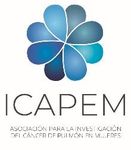ENDGAME DECLARATION OF TOBACCO IN SPAIN 2030
←
→
Page content transcription
If your browser does not render page correctly, please read the page content below
ENDGAME DECLARATION OF TOBACCO IN SPAIN 2030
Tobacco and nicotine use is the leading preventable cause of death in Spain, causing the loss of more
than 60,000 lives per year as well as a huge human, family and economic impact. For the tobacco
pandemic there is no vaccine, but it is preventable through the action of citizens, thanks to their
government and non-governmental representatives.
At the beginning of the third decade of the 21st century, in which our national health system is
increasingly overwhelmed – by an ageing population and by the presence of relatively unexpected viral
epidemics – treating diseases arising from tobacco and nicotine use is a burden largely avoidable.
Reducing the prevalence of smoking to a residual percentage over the next decade – in addition to
significantly improving population health can result in relief in the workload of our healthcare system
and a reduction in cost overruns caused by people who smoke compared to those who do not.
Additionally, Spain has signed and ratified the first global public health treaty, the WHO Framework
Convention on Tobacco Control (FCTC). For this reason, it must also act courageously and decisively to
fulfill its objective: “to protect present and future generations from the devastating health, social,
environmental and economic consequences of tobacco consumption and exposure to tobacco smoke”
Ending the tobacco epidemic is something that we must strive to achieve without qualms, without
restrictions, without being subjected to interference and economic interests, making public health the
priority above other interests, however powerful they may be.
Despite efforts made to control smoking, such as the laws of 2005 and 2010, the prevalence of smoking
in Spain remains high.
While most of the countries of the European Union define, advance and consolidate their short and
long-term strategies in the fight for health and tobacco control, Spain, perhaps unconsciously, ends up
bowing to the interests of the tobacco industry, postponing the protection of citizens’ right to health.
The time has come to consider the objective of making tobacco consumption disappear from Spanish
society. As society has been increasingly empowered during recent years it now not only demands the
expansion of spaces without tobacco smoke or vapors and the protection of the health of citizens, but
it also aspires to an endgame objective which marks each of the guidelines and actions, policies and
regulations in favor of health and against the interests and actions of an industry that seems to
disregard the health and well-being of the population.
To this end, the signatories of this Declaration urge the Government of Spain to establish the
foundations for the first tobacco free generation in 2025 and reach the end of the tobacco epidemic,
known internationally as tobacco endgame, in 2030, to, like many European countries, resolutely save
tens of thousands of lives.
To do this we consider the following elements necessary:
➢ In general, it should be taken into account that the objectives of any industry, whose interests
align with what is known as "commercial determinants of health," are fundamentally:
• in the short-term, sowing doubts about the toxicity of its products or the control
measures, in order to WIN TIME and postpone as much as possible all kinds of health
regulation;
• in the medium-long term, contribute to the NORMALIZATION of already established
consumption and new consumption.Therefore, to reduce tobacco use, priority must be given by all possible means to:
• Avoid anything that implies a delay in the application of the adopted measures, avoiding
entering into pseudo-legal or pseudo-scientific disputes. Care must be taken to ensure
that the measures enter into force as soon as possible once they have been adopted and
avoid any unjustifiable delay in implementation.
• Avoid anything that contributes to the normalization of tobacco use or other consumer
products containing nicotine, applying the measures deemed appropriate and not
entering the game of myopic strategy that involves the normalization of nicotine
consumption which consciously or unconsciously (usually consciously) benefits the
tobacco industry.
➢ A short-term strategy, which includes among other elements:
1. Consolidation of spaces without tobacco smoke or aerosols/vapors (Article 8 FCTC): a
100% smoke-free hospitality in both indoor and outdoor spaces, sports spaces, university
campuses, security perimeters of at least 10 meters in accesses to educational centers
and hospitals, entrances to shopping centers, bus stops, public transport platforms,
beaches and other natural spaces, swimming pools, queues and situations where people
congregate for educational, environmental or social reasons.
2. Declare all means of transport, public or private, free of tobacco smoke: to avoid passive
exposure of any citizen, especially minors, as well as for road safety reasons.
3. Establish legal protection for all those affected by tobacco smoke in their homes, smoke
caused by tobacco consumption by other residents of the same building, or on balconies
or light patios. The contamination of the private home by tobacco smoke coming from
outside must be legally considered an unhealthy activity that must be prohibited and
punishable to ensure the protection of the health of the persons concerned.
4. Legal and fiscal harmonization of nicotine release devices, herbal smoking products,
heating tobacco products (PTCs) and other novel tobacco products for tobacco use
equalizing fiscal and legislative (identical restrictions on consumption, marketing and
limitations on advertising, promotion and sponsorship), making explicit mention of
devices such as water pipes or hookahs.
5. The increase of tobacco taxes, regardless of the tobacco/nicotine or similar product
concerned, to reach a tax rate at the level of the most developed countries of the
European Union, which reduces accessibility and, consequently, consumption (Article 6
FCTC).
6. Plain packaging: as nine European countries and 18 countries around the world have
already implemented, to reduce the attractiveness of the product to minors, increase
their perception of risk and ultimately discourage their consumption.
7. Expand funding and access to smoking cessation treatments: ensuring that smokers can
have access to all pharmacological and behavioral therapies that have been scientifically
proven to be effective and safe to quit smoking.
8. Eliminate tobacco advertising and promotions and new forms of tobacco consumption
at points of sale, including the button panels of vending machines.
9. Eliminate the possibility of selling tobacco and new forms of consumption in vending
machines, hospitality businesses, gas stations and convenience stores.10. Restrict the sale of any tobacco product or similar products to state tobacco stores.
11. Strengthen the prohibition of the sale of tobacco products to minors, including new
forms of consumption, through identity checks for persons appearing to be under 25
years of age.
12. Establish control over audiovisual and theatrical productions to reduce the influence of
undeclared economic interests on the overabundance of scenes of tobacco consumption
and avoid the use of real tobacco products.
13. Address covert advertising through influencers on social networks: Consider restrictions
on advertising and promotion including social media posts that promote consumption,
display consumers in a way that promotes smoking, cite trademarks of tobacco products
or new forms of consumption, display such brands or their identifying logos, or display
the products in any way that can be identified, even if they are not being used or
consumed.
14. Carry out campaigns of segmented social marketing to various population profiles for
the correct perception of risk of tobacco consumption, always ensuring the necessary
annual budget allocation.
15. Allocate 2% of tobacco excise taxes to tobacco prevention and control, including
research and implementation of interventions in vulnerable groups.
16. Implement tobacco prevention programs in school settings.
17. Develop educational curricula on tobacco control in the higher education and university
grades of Health Sciences.
18. Review and update the classification of infractions and the amounts of sanctions, in
accordance with the provisions of the Law.
19. Eliminate the transitional regime of common names, to prevent products from being
sold, even outside tobacco stores, with logos and tobacco trademarks.
20. Remove exceptions from Ley 28/2005
a. Eliminate the exclusion of private smoking clubs as it normalizes consumption by
those who already smoke and is unnecessary, since nothing prevents those who
smoke from meeting wherever and however they want, and because they have
been a loophole to circumvent the law.
b. Suppress the exception in hotels, hostels, and similar establishments as
unnecessary.
c. Eliminate exceptions in psychiatric facilities, prisons and residential centers for
the elderly or people with disabilities, in accordance with reports issued by experts
in each sector.
21. Avoid any interference by the tobacco industry in the design and implementation of
tobacco control policies (Article 5.3 FCTC).
22. Establish an independent traceability system for tobacco products, in whose design and
control the tobacco industry does not intervene.23. Facilitate the work of monitoring compliance with the Law by associations involved in
the fight against smoking.
24. Establish a COVID-19 prevention mechanism in the context tobacco consumption and
exposure to tobacco smoking: It is necessary to consider tobacco control as a key element
of COVID-19 pandemic recovery. The measures referred to in section 1 (smoke spaces)
and 14 (awareness campaigns) of this point may contribute to this.
➢ A medium-term strategy that includes, among other elements:
1. The industrial and professional transition of the tobacco sector, both in the distribution
and of the affected regional agricultural sectors concerned through the creation of a fund
for the transition and allocation of a specific professional program for the workers and
employers concerned, with particular attention to territorial circumstances.
2. Public investment in research, in both prevention of consumption and pathologies
derived from exposure to smoke and tobacco consumption, in order to prevent access
for minors and to improve people's life expectancy and quality already affected by these
diseases. This is a way of trying to compensate the victims of smoking for the state's slow
and delayed action in protecting their citizens from the interests of small pressure groups.
3. To restrict as comprehensively as possible the acquisition of tobacco or new forms of
tobacco products to all those born in 2007 or after when they reach 18 years of age (the
age of majority in Spain, as of 2025), in order to stop the influx of new nicotine addicts
and dissuading future generations from tobacco use and becoming nicotine addicts
(Article 2.1 CMCT).
➢ A long-term strategy, which addresses all the above in order to achieve:
1. The endgame of smoking and new forms of consumption in Spain in 2030, which
translates into achieving a smoking prevalence rate of 5% or below
2. To reduce the smoking rate to 2% by 2040.
All these short, medium and long-term strategies should be included in a Comprehensive Tobacco
Control Plan that is financially sustained through a Tobacco Control Fund supported by taxes and
levies on the tobacco industry under a criterion similar to that established by France since 2016 and
which has assisted in significantly increasing the cost of tobacco products and reducing consumption
rates.
The undersigned request the Government of Spain to amend the Law 28/2005, of December 26, 2005
on health measures to reduce smoking and regulating the sale, supply, consumption and advertising
of tobacco products, and call on the government to incorporate the short-term, medium-term and
long-term strategic elements that are highlighted in this proposed Endgame Declaration for Spain
(DECLARACIÓN ENDGAME DEL TABACO EN ESPAÑA 2030).
For this they have our full support, both social, technical, and professional.You can also read

























































